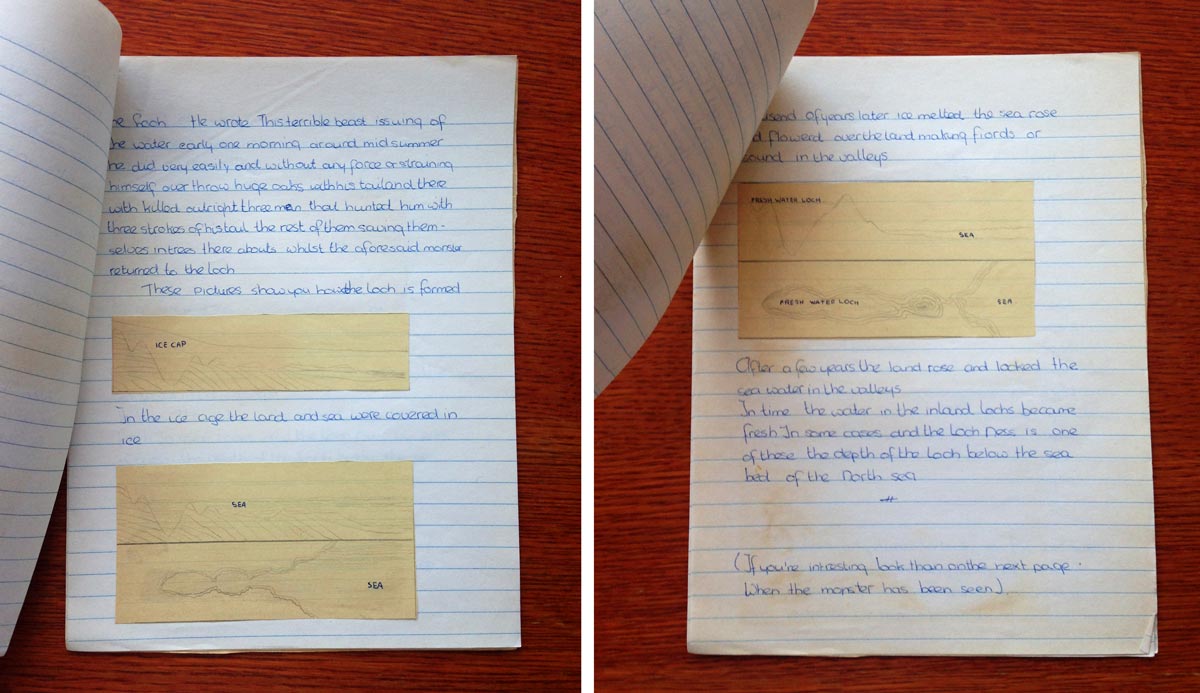It is Spring in Perth… and what better time of the year than go through a proper house clean-up.
In the process of tidying the house I rediscovered some school projects I worked on back when I was about 13yo. A series of hand written and drawn reports in which glued photos and images I’d drawn. I have very fond memories of working on school projects like these. They triggered a level of engagement and creativity in me that I never got out (old-style) linear learning. They allowed me to learn by finding information (augmentation) instead of information being methodically pushed my way.

Working on projects, such as the Loch Ness Monster story illustrated above, meant I spent plenty of time in the local library, going through books, encyclopedias in search of those bits of information that would help me enhance my project. The library was my ‘just-in-time’ information source.
School projects today…
A week or so ago, whilst on-site with a client, I was handed a copy of a school project put together by a 13yo student here in Perth. She’d used Adobe InDesign to produce a small booklet about Paris. I was amazed!

I went to school in the previous century (yup… that makes me sound kinda old, I know!!), we had no computers in the classroom. I think it is amazing to see how students today, use technology as a means to an end. Their storytelling is digital and it’s great to see the role Adobe plays in providing students (and teachers) with access to digital media technologies. Be it through use of Adobe Premiere and Photoshop Elements for video and image editing, Adobe Muse (web creation) or Adobe InDesign (ebook, interactive digital publications, desktop publishing) etc.
I can only imagine what my own Loch Ness Monster project would have looked like, had I had been able to express myself through digital technology 🙂
Today’s students can capture their stories through digital imagery, digital video, interactive games and publications and much more. It’s exciting to see how technology is being integrated across the curriculum in K-12 and Higher Education. Learning’s really being brought to life! For a split second I wish I was back at school working on my Loch Ness Monster project again… 🙂 Turning it into a Muse web-site or Interactive App 🙂
Looking for more info on Adobe in Education?
- Start here at Adobe’s Education launch page.
- or check out what people think of CS6 in Education on this Adobe TV episode.
- and of course 🙂 sign-up for the Adobe Education Exchange.
Leave a Reply